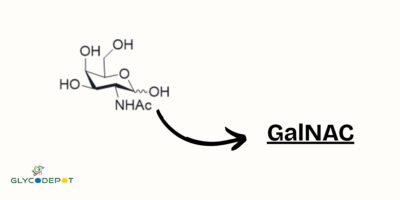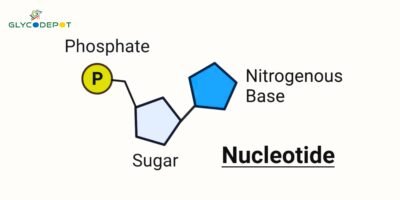What Are Enzyme Substrates?

An enzyme substrate is any substance upon which an enzyme acts to catalyze biochemical reactions and is necessary for various biological processes, ranging from metabolism and digestion to DNA replication and cell signaling.
Enzymes are highly effective proteins that can reduce the activation energy requirement of chemical reactions so that reactions happen faster at reduced temperatures than in the absence of enzymes.
An enzyme takes hold of its substrate in its active site, where chemical changes occur to create an enzyme substrate complex that further breaks down into products.
Through this process, the substrate and the products developed internally get chemically changed as new ones are born; most of the enzymes can be recycled to continue catalyzing reactions for subsequent substrates.
One of the most remarkable aspects of enzyme substrate interactions is their specificity. Enzymes have a unique ability to interact with only specific or closely related substrates, catalyzing the biochemical reactions needed. These interactions provide precise metabolic pathways within cells and organisms, ensuring the accuracy and precision of your research.
Enzyme substrates are an integral component of both natural biological functions and experimental studies to evaluate enzyme function, develop assays, and identify inhibitors or activator compounds in either clinical research activity or research investigations.
Are There Various Types of Enzyme Substrates?
Different enzyme substrates can be classified into diverse groups depending upon interaction with an enzyme class or biochemical reaction it catalyzes, molecular arrangement differences between different classes of substrates, differences in molecular weights among them, and to which classes of enzymes they belong. Research or industrial activities must utilize enzyme substrates properly.
These are some of the most commonly used enzyme substrates:
Protein Substrates:
Proteolytic enzymes like proteases or peptidases utilize proteolysis enzymes to break down larger proteins into fragments that may be hydrolyzed further to release individual amino acids or fragments for analysis by researchers working on processing, digestion, or bioregulation processes in biological systems. Researchers usually use protein substrates for such research work.
Carbohydrate Substrates:
Sugars or polysaccharides are substrates of enzymes like amylases, cellulases, and lactases to hydrolyze into simpler sugar molecules e.g., amylase degrades starch into simple molecules. Carbohydrate substrates are essential in metabolic studies and digestion based biotechnology fermentation process research.
Lipid and Fatty Acid Substrates:
Oils and fats are substrates for lipase enzymes that catalyze ester linkage hydrolysis within them to liberate their component glycerol and fatty acids for lipase processing; such processes enable researchers to study metabolism, energy generation, and band iosynthesis pathways of fatty acids within fatty acid study projects.
Nucleic Acid Substrates:
Nucleic acids like DNA and RNA serve as substrates for enzymes called nucleases and polymerases, which degrade them, copy them, or build new ones like restriction enzymes that cut DNA at defined positions based on predefined sequences. These nucleic acid substrates are integral components of molecular biology experiments, gene editing experiments, genetic research/experiments, and molecular ecology research experiments.
Small Molecule Substrates:
Substrates yielded by enzymes are typically referred to as substrates. As small molecular weight, low molecular compounds act upon some sets of enzymes associated with energy production, signal transmission, cell metabolism pathways, or signal cascades of transmissions.
Central actors in cell energy pathways, such as ATP or glucose, act upon some enzymes as energy producers, signal transmitters, or catalysts to metabolisms.
Likewise, Kinases or Dehydrogenases enzymes catalyze small molecule substrates becoming central actors within these pathways cellular energy pathways as substrates catalyze small molecule substrates so becoming central actors themselves within cell energy pathways.
Each substrate class serves its distinct function in biochemical investigations; when coupled with specific enzymes, scientists can explore various biochemical processes through interactions. Because selecting an ideal substrate has such an immense influence over the results of an enzyme reaction, selecting it properly should always be an essential consideration in experiment design.
How Do Enzyme Substrate Interactions Work?
Enzyme substrate interactions are the foundation of cell biology and biochemistry. They start where substrate molecules bind to an enzyme’s active site a region specially designed for chemical reactions via binding.
Here follows the step by step process of how enzyme substrate interactions tend to occur:
- Binding of Substrate to Enzyme: Substrates bind to an enzyme’s active site by binding interactions, and such a region exists with unique shapes and conditions to bind with unique substrates. Such uniqueness has been described as a “lock and key” system in which unique substrates would fit into such an active site of an enzyme (the lock).
- Enzyme Substrate Complex Formation: Upon substrate binding, enzyme and substrate form an enzyme substrate complex generally stabilized by weak forces like hydrogen bonds, ionic bonds, or van der Waals forces. In addition, the enzyme’s active site can stabilize the transition state by reducing the activation energy required for reaction.
- Catalysis of the Reaction: After establishing an enzyme substrate complex, an enzyme catalyzes its conversion into one or more products. An enzyme can catalyse this conversion by positively contributing to its environment by donating/accepting protons or breaking bonds and/or forming new ones.
- Release of Product: Once the reaction is over, its product is released from the active site of an enzyme and into the solution. The cycle continues since there are no longer bound substrates to communicate.
Enzyme substrates play a crucial role in maintaining homeostasis in living organisms. By controlling metabolic processes accurately and effectively, they ensure the balance and stability of life processes. These interactions are not just vital in cell functions, but also in understanding and maintaining the homeostasis of organisms, highlighting the importance of your research.
Examples of Common Enzyme Substrate Interactions

Amylase and Starch:
Amylase is an enzyme in the human pancreas (and in saliva) that helps break starch. Starch is broken into more easily digested basic sugars like maltose or glucose for absorption by the human body. This starts as soon as we eat. It continues in our stomach and gets absorbed into the small intestine. This is how we get energy from carbohydrates in our diet.
Proteases and Protein:
Proteases are enzymes such as trypsin and pepsin that break apart proteins into smaller fragments such as peptides or single amino acids for easier digestion in our food and recycling into healthy cells so our bodies have all of the building blocks needed for good health.
Lipase and Triglycerides:
Lipase is an enzyme that helps our bodies break down fats, such as triglycerides. Lipase turns triglycerides into usable energy forms. Our bodies can use this energy immediately or store it for future needs. This process is essential for maintaining energy, cell health, and overall well being. Without lipase, we would be incapable of digesting all the dietary sources we consume that are necessary for energy, cell function, and overall wellness!
DNA Polymerase and DNA:
DNA Polymerase is an indispensable enzyme essential to creating new DNA strands, adding nucleotides building blocks of DNA into long chains that serve reproduction during cell division and repair damage in damaged DNA strands. Without DNA polymerase, our bodies would no longer have access to creating copies or correcting errors within existing ones, potentially leading to serious health implications and further health concerns.
Lactase:
Lactase is an enzyme that aids in breaking down lactose and milk sugars. This breakdown process releases two easier sugars from lactose: glucose and galactose. These are easily used to digest dairy products such as cheese. Unfortunately, compromised amounts of lactase could impede this process, yet many individuals might remain unaware they’ve developed issues due to subtle symptoms that indicate indigestion problems with dairy.
How Does Enzyme Activity Depend on Substrate Concentration?
Substrate concentration plays a vital role in enzyme activity. With every increase in substrate concentration, enzyme catalyzed reactions rise to the maximum. As more and more substrate molecules become available for binding with enzymes, the subsequent formation of enzyme-substrate complexes results in product formation.
After a certain amount of substrate has been achieved, its reaction rate starts to decrease considerably as all active sites on an enzyme are occupied by substrate molecules, and its capacity is maximized; this is the saturation point.
Buy Different Types of Enzyme Substrates Products at Glycodepot
Glycodepot offers a comprehensive range of enzyme substrates for research, diagnostic, and biotechnology applications across various fields. Our enzyme substrates are specifically designed to facilitate multiple enzyme reactions involved in protein digestion, carb metabolism, and nucleic acid processing for repeatable experimental results each time.
Our high quality products are accompanied by the consistency and purity needed for consistent experimental outcomes.
Regardless of your research area enzyme kinetics, diagnostic tests, or metabolic assays our substrates for enzymes will serve all your purposes.
What is the Relationship Between an Enzyme and a Substrate?
The interaction of an enzyme with its substrate is a good illustration of biochemical efficiency and specificity. Enzymes bind with their substrate through processes of product formation and catalysis.
Enzymes are biological catalysts that speed up chemical reactions by lowering the activation energies needed. Substrates are molecules upon which an enzyme operates to produce products necessary for cell processes or metabolic pathways as by products of interaction.
What Factors Affect Enzyme Substrate Interactions?

Several factors can influence enzyme-substrate interactions:
- Temperature: As temperature increases, enzyme activity increases up to an optimum level. Further, the enzyme is denatured by denaturation, thereby making its function irrelevant.
- pH: Enzymes need a particular pH range for optimum activity. When this range varies excessively from its optimal position. They can change in shape or function and prevent their ability to perform their functions, delay reactions, or completely halt them.
- Substrate Concentration: An increase in substrate concentration will accelerate enzyme reactions. However, after all of the active sites on an enzyme are utilized, adding more substrates will not matter. Any additional amount will not speed up the action any further.
- Enzyme Concentration: Increasing the concentration of enzymes will speed up reactions if there is a large enough substrate more significant numbers of active sites equal quick breakdown of substrate and, hence, faster responses in general.
- Inhibitors: Inhibitors are substances utilized to reduce or suppress the function of enzymes briefly. Through attachment with enzymes or substrates and preventing their reaction from occurring, inhibitors regulate reactions in the body, but excessive levels can be dangerous to health.
Applications & Industries – Who Needs Enzyme Substrate?
Enzyme substrates are used in various industries and research sectors ranging from biotechnology & pharmaceuticals to diagnostics & biosensor technology. Following are some of the industries that are reliant on enzyme substrates:
- Food & Beverage Industry: Enzyme substrates apply to fermentation, baking, and brewing processes.
- Medical & Clinical Laboratories: Enzyme substrate reactions are crucial in diagnostic tests like blood tests and enzyme activity monitoring.
- Environmental Science: Enzyme-substrate interactions have traditionally been employed in waste treatment protocols, pollution sensing systems, and bioremediation.
How to Choose the Right Enzyme Substrates Product?
The choice of the correct enzyme substrate depends on several factors, including:
- Intention to work or study a particular enzyme
- Your response of choice.
- Your research requires the thrity and concentration requneeded success.
Glycodepot provides detailed product descriptions and specialist help to aid our customers in selecting the most suitable enzyme substrates for their research or applications.
How Can Glycodepot Help You?
At Glycodepot, we aim to provide high quality enzyme substrates of unmatched quality and purity for research, diagnostic assay design, and industrial process optimization. From research in the lab to clinical trials and industrial process optimization.
Glycodepot provides a range of enzyme substrates customized to fit every possible application. Expert advice and quick, dependable service make us your trusted partner in enzyme research!










